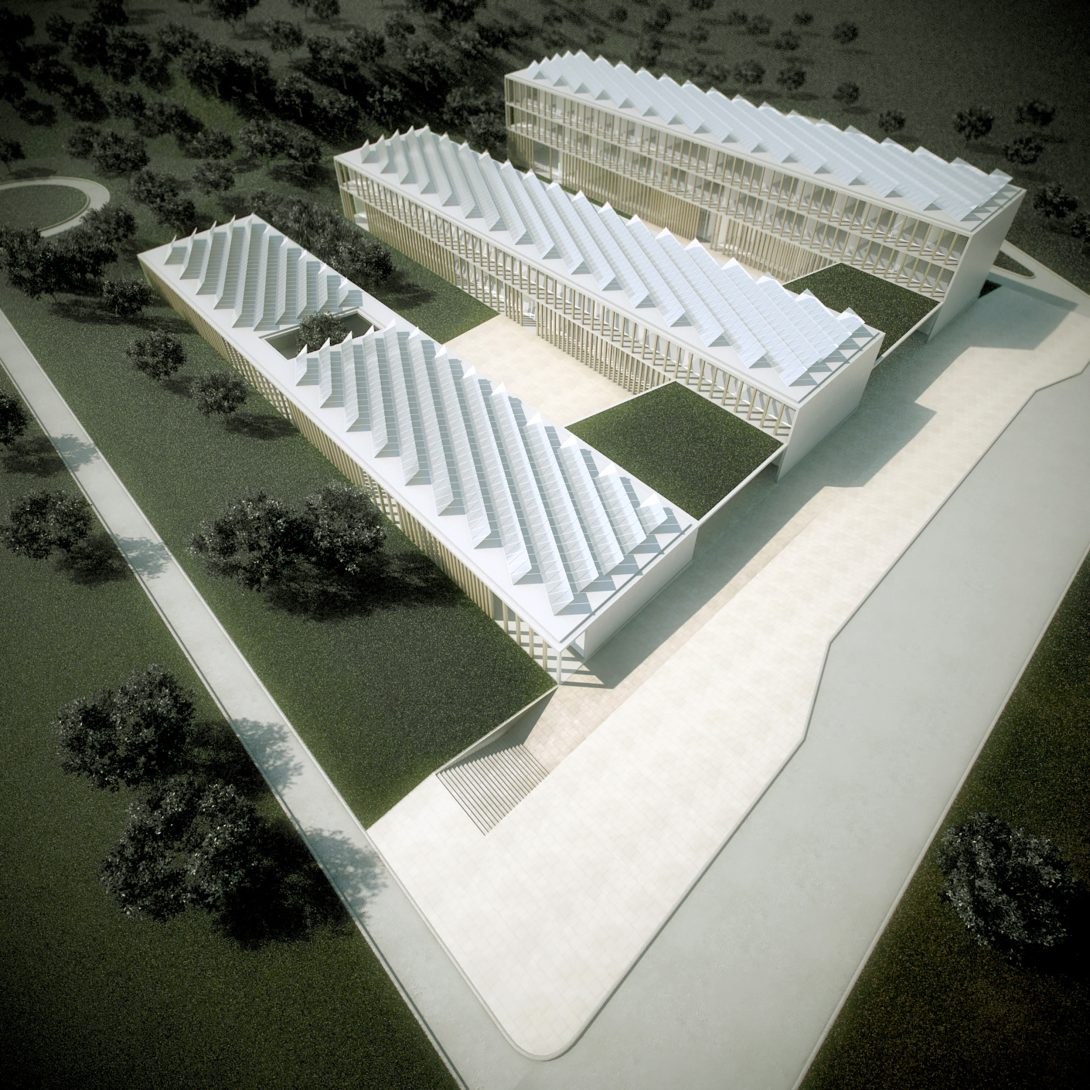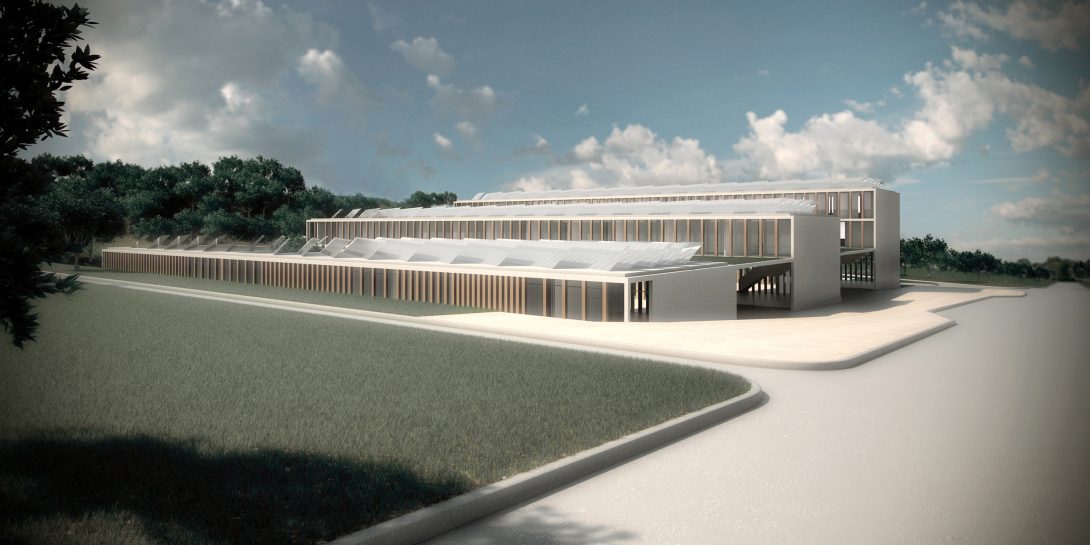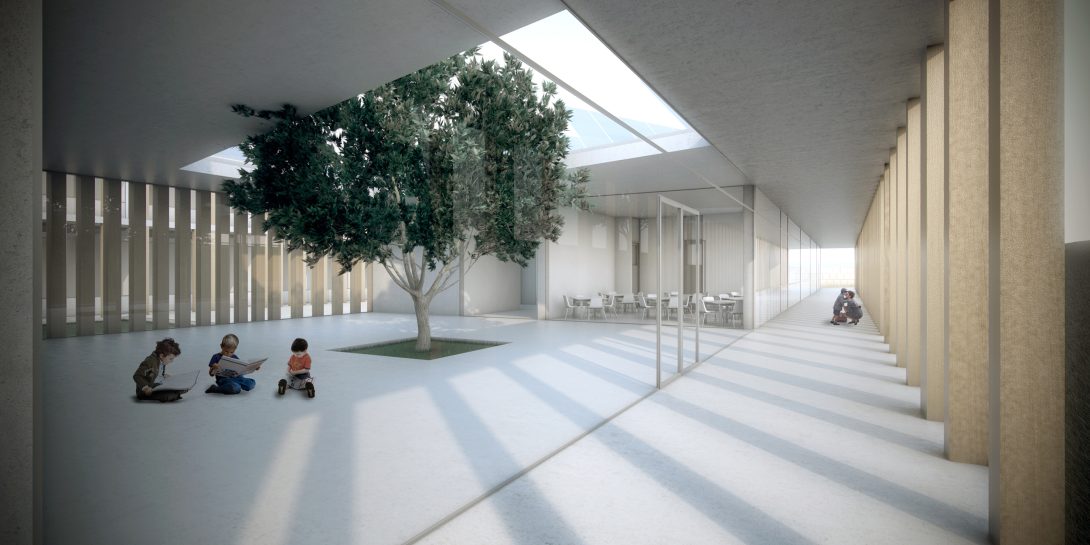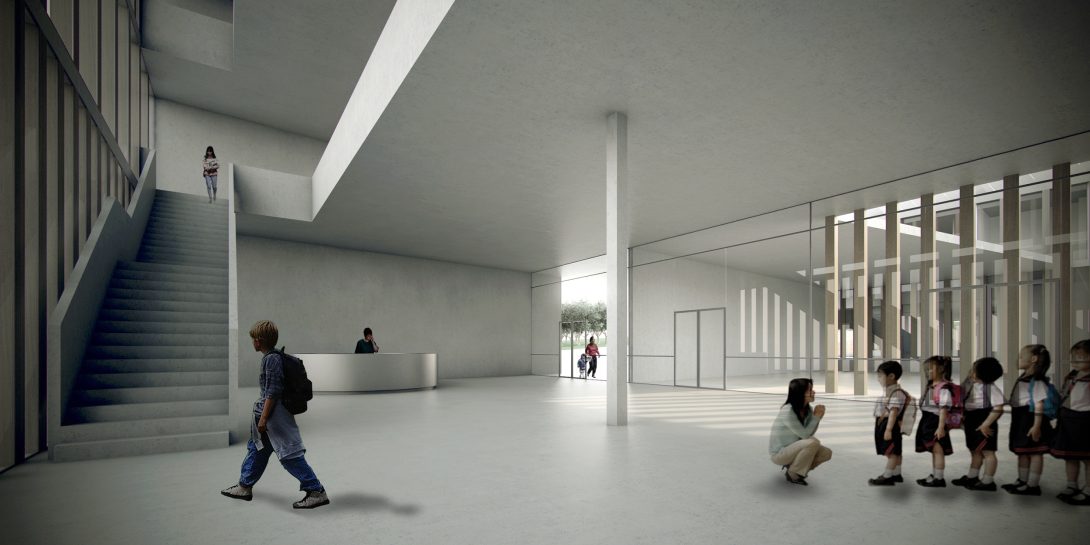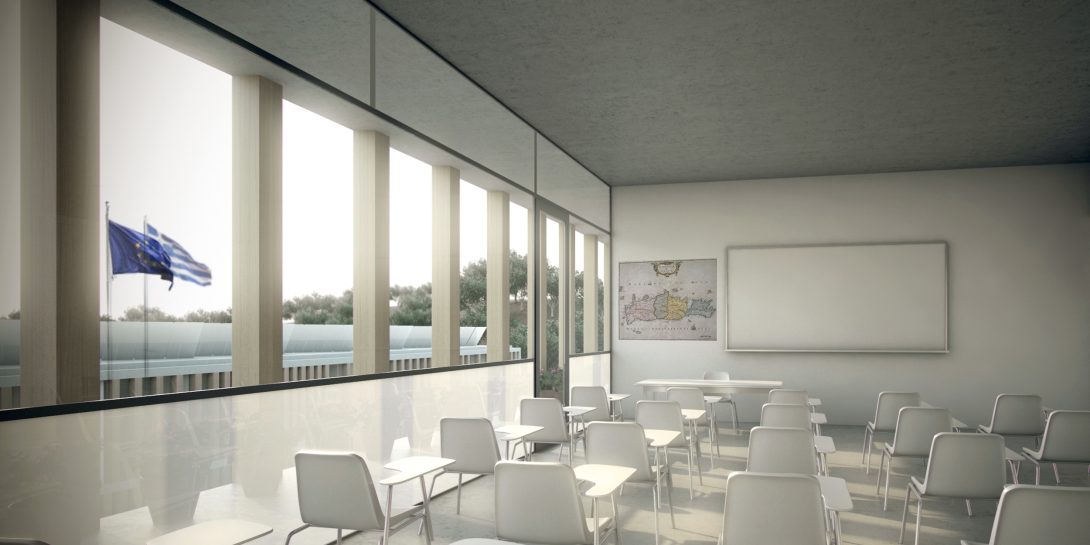Innovative, Bioclimatic, European School Complex
2014 AIA Los Angeles (AIA/Next LA) Merit Award
Location: Crete, Greece (Competition)
Size: 50,000 sq. ft.
Program: Kindergarten, Primary, Secondary School
2014 AIA Los Angeles (AIA/Next LA) Merit Award
“This is an incredibly rational project for the clarity and use of symmetry. The use of materiality, shade and shadow are reminiscent of the Salk Institute. This project creates a platform or a framework for students to layer on to and transform it. The systematic approach of how the classrooms are organized and spaced in between are given an elevated sense of importance” ~Jury Comments
The proposal is based on two main design premises: an understanding of the program as a reflection on the nature of teaching and learning, and an acknowledgment of the place as a didactic reflection on how architecture can relate the human habitat, its activities and the physical and cultural environment where it is inserted.
The challenge of designing an educational building that comprises three different levels of education is addressed by proposing a group of functionally different buildings with a formal and material unity. The three main programmatic areas are physically separated by courtyards and they take advantage of the topography in order to diminish the visual impact of the building by having the tallest building in the lowest part of the site and merge into the landscape letting the olive tree slopes interlock with the buildings. The use of open courtyards reinforce the interior activities. The presence of wooden columns lined verandas as buffer zones between the exterior and the interior establish a link with ancient Minoan architecture, and stress the idea that teaching and learning happen everywhere and anytime, vertically but also horizontally, between mates. The dependence on mechanical systems is greatly reduced by the precise early architectural decisions that regulate the effects of the environment on the comfort and its energy demands. Rather than having sustainable add-ons, the complex benefits from a holistic approach to the topographic, cultural and bioclimatic conditions of its place.
